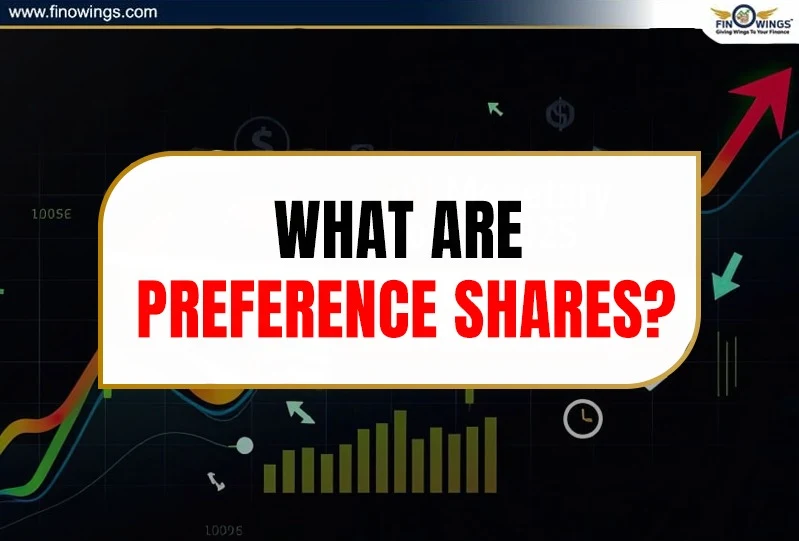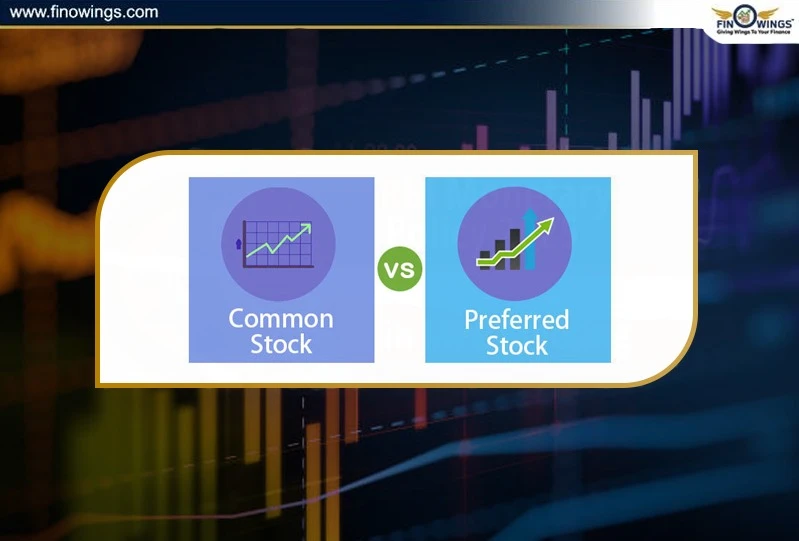Home >> Blog >> What Are Preference Shares? Meaning, Types & Key Features
What Are Preference Shares? Meaning, Types & Key Features

Table of Contents
- Preference Shares Definition
- What Is A Preference Share?
- Preference Share Characteristics
- Types of Preference Shares
- Example of Preference Shares
- Advantages of Preference Shares
- Disadvantages of Preference Shares
- Preference Shares vs Equity Shares
- Tax Treatment of Preference Shares
- Who Should Invest in Preference Shares?
- Conclusion
When you invest money into a company, you become a shareholder through ownership equity. However, it's important to understand that not all equity is equal. In addition to ordinary equity shares, companies also issue preference shares. These provide additional privileges, particularly concerning dividend payments and liquidation.
Here, we’ll get into the meaning of preference shares, the types of preference shares and the key benefits and drawbacks, so you can ascertain how they operate and how they can fit into an investor’s portfolio.
Preference Shares Definition
Now, let's concentrate on defining preference shares. Prior to any dividend being paid to equity owners, stockholders of preference shares, also known as preferred stock, are entitled to a preset payout. To put it another way, preference shareholders have "preference" over equity owners in terms of capital repayment or earnings.
While equity shareholders own the business and have the right to vote, preference shareholders receive a steady income, priority in payouts, and no voting rights.
What Is A Preference Share?
In simple terms, preference shares are somewhat a blend of equity and debt. They are a combination of both:
Like equity, they are a stake in a company. Like debt, they provide a fixed return (dividends). For instance, if a company issues 1,000 preference shares at Rs. 100 each, and each share provides a 10% dividend, that means each investor receives Rs. 10 each year regardless of how profitable the company is. This is why preference shares are excellent for stable income and not high capital.
Preference Share Characteristics
For a better understanding of preference shares meaning, here are the features:
1. Fixed Dividend
Before any equity shareholders, preference shareholders receive a fixed rate of dividend.
2. Priority in Repayment
In liquidation, equity shareholders are last in line.
3. Limited or No Voting Rights
They cannot vote in company meetings, with a few exceptions.
4. Hybrid Nature
Preference shares are a combination of debt (fixed return) and equity (ownership).
5. Convertibility Option
After a certain period, some preference shares can be converted to equity shares.
6. Redemption Feature
After a specified period, some types can be bought back.
Types of Preference Shares
There are various types of preference shares with differing features and rights. Here are the main types:
1. Cumulative Preference Shares
Dividends may accrue if a corporation decides not to pay them to shareholders in a given year. The company must pay these dividends before the equity holders receive anything. These are most suitable for investors who desire guaranteed returns.
2. Non-Cumulative Preference Shares
The owner of these shares give up their future dividend claim rights. The shareholder forfeits the dividend if the corporation does not declare one throughout the year. Investors who are prepared to take on a little bit extra risk might consider these shares.
3. Redeemable Preference Shares
These types of preference shares can be redeemed or bought back by the company after a specific time or once they reach maturity. Most modern companies issue these kinds of preference shares.
4. Irredeemable Preference Shares
Unlike the redeemable preference shares, these shares cannot be redeemed while the company is operational. They can only be redeemed once the company is liquidated.
5. Convertible Preference Shares
These types of preference shares can be transformed into equity shares after a set period, allowing investors to benefit from the company’s growth at a future time.
6. Non-Convertible Preference Shares
These types of shares possess the same characteristics as ordinary shares. Non-convertible preference shares are also fixed-income shares.
7. Participating Preference Shares
These shareholders receive fixed dividends, but also receive a share of the extra profit. This profit-sharing applies to the company’s shareholders and occurs after all equity shareholders have received their profit.
For example, if a company announces a bonus dividend, the participating preference shareholders receive one.
8. Non-Participating Preference Shares
These shareholders only collect fixed dividends for their investment and do not participate in profit-sharing.
9. Adjustable Rate Preference Shares
In this type of preference shares, the holder’s dividends increase or decrease depending on a set or variable interest rate. This helps intercept inflation.
Example of Preference Shares
For illustration, let’s consider the case of ABC Ltd.
Suppose ABC Ltd. issues:
10,000 preference shares at ₹100 each.
Dividend rate is 12% per annum.
In this situation every preference holder is going to earn ₹12 per share every year. Even if the profit of the company is varying, the profit of the preference shareholders is static at 12% profit per share. This is assuming there are distributable profits.
In the case of a winding up of ABC Ltd, the preference shareholders are going to be paid their investment back before the equity shareholders are paid.
Advantages of Preference Shares
1. Fixed Income
With a fixed and steady profit, preference shares become a secure investment, particularly for conservative investors.
2. Priority in Payouts
Preference shareholders receive dividends and compensation in liquidation prior to equity holders being compensated.
3. Less Volatile
The prices of preference shares remain relatively stable when compared to equity shares.
4. Convertible Options
Convertible preference shares provide opportunities for long-term growth.
5. Corporate Flexibility
Companies can issue preference shares to raise funds without losing control of the company.
Disadvantages of Preference Shares
1. Limited Voting Rights
Preference shareholders are usually left out of the management and decision-making processes.
2. Lower Returns
Equity holders have the potential to earn more on their investment and receive variable dividends compared to the fixed dividends on preference shares.
3. Dependence on Company Profits
A company must pay dividends when they have profits available for distribution.
4. Less Liquidity
Common equity is traded more frequently and in larger volumes when compared to preference shares.
Preference Shares vs Equity Shares
|
Aspect |
Preference Shares |
Equity Shares |
|
Dividend |
Fixed dividend |
Variable dividend |
|
Voting Rights |
Usually none |
Full voting rights |
|
Risk Level |
Lower |
Higher |
|
Return Potential |
Limited |
Unlimited |
|
Priority in Liquidation |
Higher |
Lower |
|
Suitable For |
Conservative investors |
Growth-oriented investors |
Tax Treatment of Preference Shares
Investors must pay taxes on dividends received from preference shares as per their income tax slab rate. Companies however can treat dividend payouts as non-taxable expenses. Cumulative dividends must be paid on preference shares so investors must be aware of whether the shares are cumulative or non-cumulative.
Who Should Invest in Preference Shares?
Preference shares are ideal for:
-
Institutional investors seeking priority returns.
-
Companies seeking to raise capital while keeping voting control.
Conclusion
Due to the safety measures and steady income that preference shares provide, they serve as hybrid investments. Preference share investors earn dividends and have capital preference, though they do receive restricted voting rights and diminished overall potential.
Being able to explain what is preference share, its meaning, and the types of preference shares is invaluable to investors as it helps them select instruments that meet their financial goals and acceptable risk levels.
Preference shares work well as equity investments while adding important capital to a balanced portfolio.
Dividend-paying businesses might be an excellent addition to your portfolio if you enjoy the prospect of consistent income from investments. Discover which stocks are anticipated to pay out substantial dividends in the upcoming months by reading our most recent blog post on top Upcoming Dividend Stocks.
DISCLAIMER: This blog is NOT any buy or sell recommendation. No investment or trading advice is given. The content is purely for educational and information purposes only. Always consult your eligible financial advisor for investment-related decisions.




.webp)














